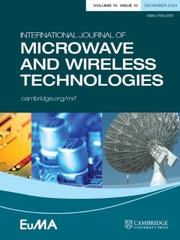No CrossRef data available.
Parity-time-symmetric wireless power transfer systems with dual independent transmitters
Published online by Cambridge University Press: 11 November 2025
Abstract
In many wireless power transfer (WPT) scenarios, to prevent lateral misalignment between the transmitter (Tx) and the receiver (Rx) and to implement a stable power transfer, multiple Txs are used in place of a single Tx. The existing multi-Tx structures lack flexibility in assembly due to wired connections between Tx units, and face the challenge of variation in power delivered to the load (PDL) in the over-coupling region. A self-organized parity-time (PT) symmetric WPT system comprising dual independent Tx units is proposed in this paper. It provides two operating modes by activating one or two Tx units, offering not only a stable but also an identical PDL. This is achieved by strategically using a scaled PT-symmetric structure when activating only one Tx unit with a scaling factor of 2, and synchronizing the oscillation when activating dual Tx units with the help of existing mutual coupling between them. The theoretical analysis is validated by simulations and experiments. The proposed structure addresses the performance valley region that exists between two side-by-side traditional single-source single-coil structures. Moreover, compared to traditional single-source dual-coil structures, it extends the lateral transfer range rate from 20% to 100% and offers flexibility in assembly.
Information
- Type
- Research Paper
- Information
- Copyright
- © The Author(s), 2025. Published by Cambridge University Press in association with The European Microwave Association.


